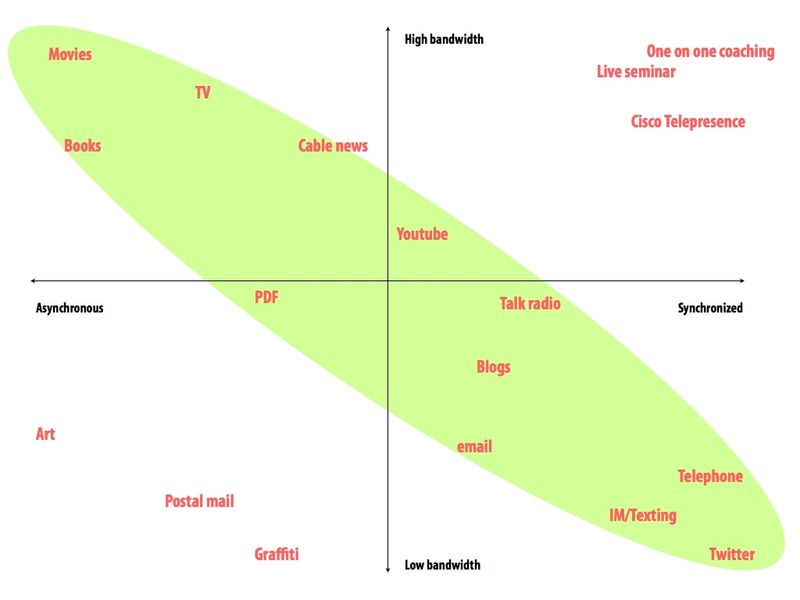The relationship between data volume and media synch
Seth Godin has published an interesting diagram and his findings on the relationship between bandwidth and synchronization of media consumption.

Asynchrony means that the author of the message and the recipient are separated in time. An example is a paper letter.
Data volume means the density of information transmitted in a message.
The green area highlights the most commercially successful media.
What conclusions can be drawn?
If you looked at this chart three years ago, you would invent Twitter. And now that you have it before your eyes, what would you invent?

Asynchrony means that the author of the message and the recipient are separated in time. An example is a paper letter.
Data volume means the density of information transmitted in a message.
The green area highlights the most commercially successful media.
What conclusions can be drawn?
- A huge connection between how much interactivity is in the media and its strength (well, at least among successful media). Telephony has changed the world because interactivity is so real. However, the more interactive you become, the less data you transfer. It is impossible to organize online communication in real time, which by the strength of the digital impact will be as strong as a movie or some other digital entertainment.
- The bottom left corner is trash. It’s hard to bring commercial value to these media. You won’t get around with advertising. People are not interested in non-interactive media with a low information density. For example, graffiti does not attract a crowd of people who want to pay for it.
- The upper right corner is those media where the highest value, but very difficult sales. Not everyone can pay for a very limited media product in the form of personal seminars or personal coaching. But those who need it and who can afford it will do it with great pleasure.
If you looked at this chart three years ago, you would invent Twitter. And now that you have it before your eyes, what would you invent?
